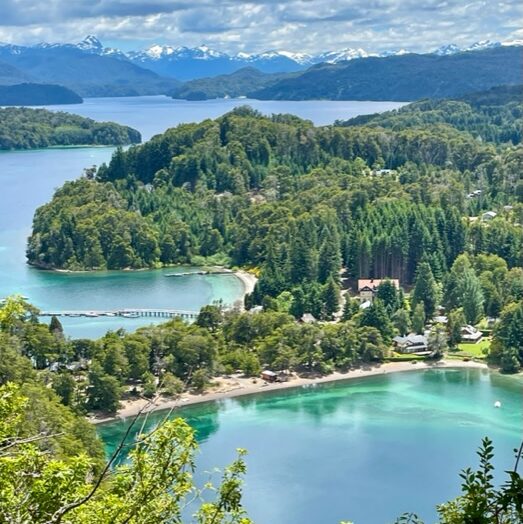When I started to tell people that I was traveling to Argentina, many asked, “Are you going to Iguazú?”
“No plans yet,” I always responded, thinking that I hope to see many waterfalls around Patagonia, how special could Iguazú be?
But throughout my adventures, I heard again and again from other travelers about this impressive place to visit. The local Indigenous tribe, the Guarani, were the first to give the waters and the falls the name of Iguazú (pronounced eee-gwa-zoo), their word for “big river.” Years later when both Argentina and Brazil were negotiating the border, they decided to share the river and falls, eventually protecting the entire area within a large national park by the same name. Then, in 1984, UNESCO declared the falls a World Heritage Site. After learning all of this, I got the idea that a trip to Iguazú might be in order.
In May, I invited my sister and her husband to come to Argentina so we could see the falls together. We planned to visit them for two full days, and although I like waterfalls, I thought that was a bit excessive. It wasn’t. I was wrong. This is big water. It’s really impressive!

The Iguazú Falls are located in the far northeast corner of Argentina and the southern corner of Brazil. The Iguazú River flows mostly through Brazil, but cuts into Argentina as it pours over walls of columnar basalt which divide the countries. Although Iguazú is not the highest waterfall in the world (that distinction goes to Angel Falls, Venezuela), or the largest curtain of water in the world (Victoria Falls, between Zambia and Zimbabwe), Iguazú is considered the largest system of waterfalls in the world; depending upon the water level, there can be between 150-300 different waterfalls at one time.
Both Brazil and Argentina have outdone themselves to build an impressive system of walkways and overlooks so that you can really feel as if you are part of the flow- and get wet in the process! It takes hours to walk to all the viewpoints, and seeing the falls from both countries was really worth it!




Argentina’s walkways help you see down into the Garganta del Diablo, or Devil’s Throat.

The Brazilian side gives you a wide-angle view of the whole wall of water.

Can you imagine… we were visiting during the dry season? The flows in the rainy summer season are so high, they often overflow the walkways. It’s so much water!



Just outside of the entrance, Brazil also has an impressive Parque de Aves, or bird rehabilitation park. It was a very loud and immersive experience as well!






Visiting Iguazú Falls was super fun with my family members!





Gayle Warberg
I’m so thrilled you decided to visit Iguazu! I had never heard of Iguazu Falls until several years ago when a news channel reported from there! I immediately put the falls on my bucket list! Thank you for posting pictures and giving more information on these magnificent falls!
Chris
What a breathtaking place! I’m glad you chose to visit and share Iguazú with us!